Let’s start the question with a brief description of my application.
I am trying to attach a headphone jack with a detect pin to a RDA5807 IC based FM radio project. I am using a separate microcontroller (ATmega8) to detect the insertion of headphone jack into the socket.
After a lot of searching, I came across this implementation which will work for me:
When the headphone is not plugged in, the detect pin (pin 4 of the socket) is connected to ground via pin 2 to the 2.2 kΩ pull-down resistor. When the headphone is plugged in, pin 2 is separated from pin 4 and is pulled up by the 100 kΩ resistor which is detected by the microcontroller.
Now, the problem is, the FM IC is controlled via I²C and can be put in a powered down mode (which will be the case most of the time.) While in power down mode, the audio outputs are grounded internally. So, while measuring the coupling capacitors in this state, I am reading about 0.1 V of reverse voltage across its pins, due to the 100 kΩ pull-up resistor (shown in the picture).
Will this cause the capacitor to significantly degrade over time or even pop?
I am using these capacitors and the only information I have about them is what they look like:
NOTES:
- Yes, I understand that the 2.2kΩ pull-down resistor will waste some output power, but I'm fine with it.
- Some implementations I saw actually made use of the headphone resistance of 16 ohm or so to detect insertion. That won't work for me, because I might insert an aux cable and connect it with another amplifier too, which will likely have a much higher input impedance.
- The only type of headphone jack that I can get hold of is the type shown in the picture. I know that there exists jacks with the detection mechanism on the sleeve pin, and truly that would make life a lot easier for me, but they are super rare and I can't get any.


